In the early 1920s, many countries wanted to be the first to fly Around-the-World- air flight successfully. The British tried in 1922 but failed, and then a French team tried in 1923. That same year, the Italians and the Portuguese said they would also try. The British also decided to give it another shot.
The United States Army Air Service wanted to match the accomplishments of others. They also wanted to be the first to fly around the world by plane. They named this mission “World Flight.” They used modified Douglas DT (Douglas Torpedo) bombers to meet the trip’s needs. Depending on the situation, these bombers could have either wheels or pontoons for landing. The Army Air Service established facilities along the planned route to support the journey with extra parts and engines. They also received help from the United States Navy, Diplomatic Corps, and other government agencies.

After many changes, the DT became a two-seat, open-cockpit biplane named the DWC (Douglas World Cruiser). The planes didn’t have radios or avionics, so the crew had to rely on their dead reckoning skills to navigate during the flights.
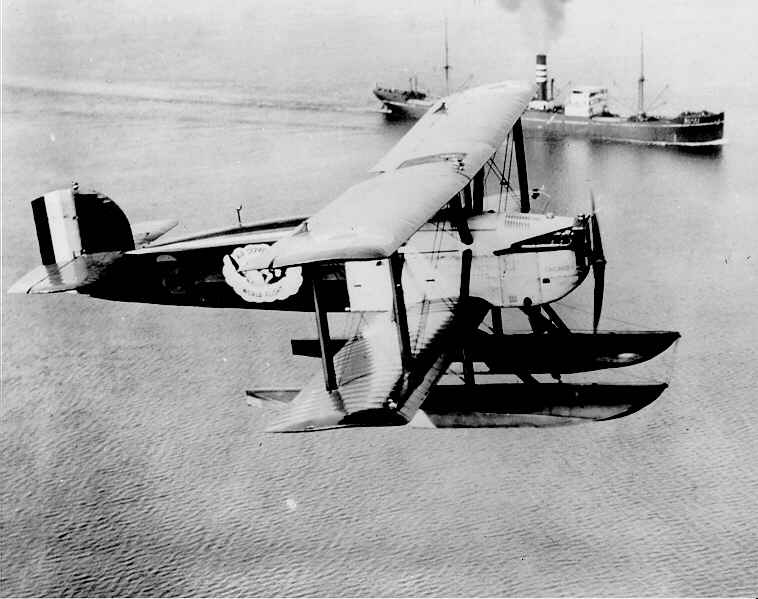
Eight pilots and mechanics from the United States Army Air Service were given a mission. One of them was Staff Sergeant Alva Lee Harvey, a Texan who joined the military when he turned 19 in 1919. He was assigned to fly with Major Fredrick A. Martin, who was in charge of the expedition and would pilot the aircraft called DWC Seattle. The other planes were named Chicago, Boston, and New Orleans.
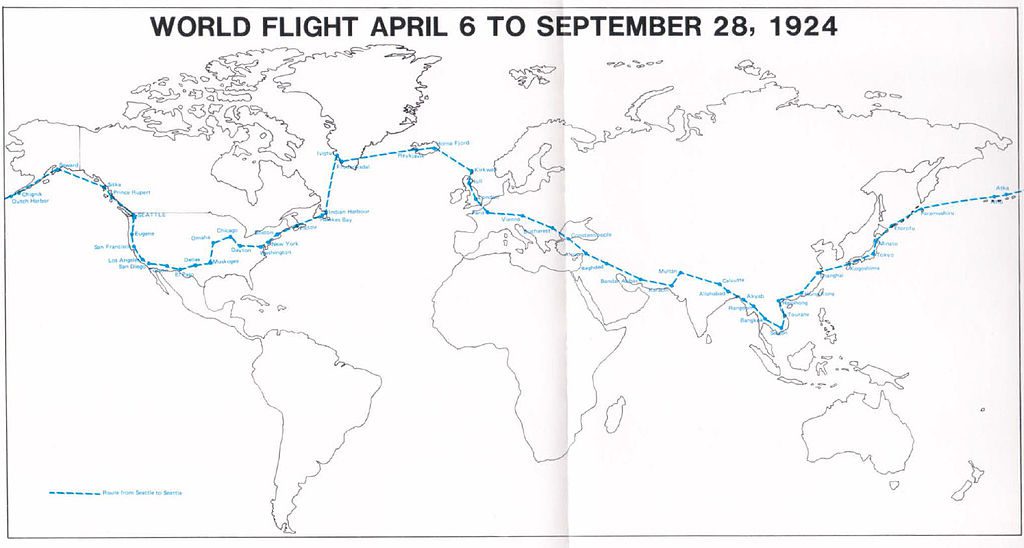
Start of the flight
On April 6, 1924, four planes left Sand Point Flying Field near Seattle, Washington, and went to Alaska on the mission’s first part. It took them more than eight hours to fly the 600 miles to their first stop, Prince Rupert, British Columbia. When landing, the Seattle, heavy with supplies, veered to the side, fell 30 feet, and its left float hit the water. This broke the outer supports on the left side. It wasn’t the start that Martin and Harvey wanted. Feeling frustrated, Martin threw a rabbit’s foot given to him in Sacramento, California, for good luck into the water. It had been bad luck. Fortunately, a local carpenter used local spruce to make new supports.

On April 15th, during a flight from Seward to Chignik, Alaska, Seattle fell behind and disappeared. The US Navy sent support ships to search and rescue, including destroyers Hullry (DD-334) (DD-330) and Co. Seattle had engine problems and had to make an emergency landing in Portage Bay, Alaska. It was discovered that there was a 3″ hole in the engine. The destroyers located the plane and brought it to Karnataka village the following day. The Coast Guard Revenue Cutter Algonquin (1898), stationed in Unalaska, Alaska, delivered a new engine and extra fuel for repairs to be carried out.
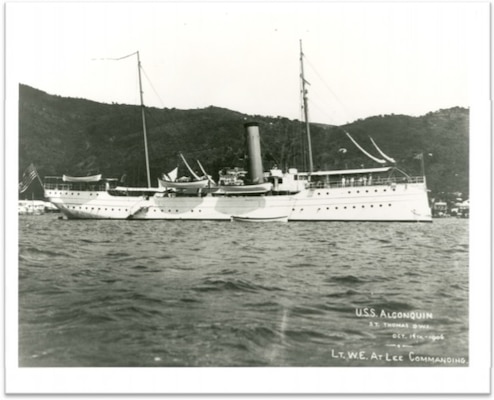
At 11:00 a.m. on April 25th, they took off again, this time on the open ocean, and tried to catch up with the rest of the flight team resting at Dutch Harbor at a coast guard station. After flying through a terrible snowstorm, Seattle finally reached Chignik. The town had two canneries and a “few dozen native huts” on a bay shaped like a horseshoe at the bottom of mountains that were four to five thousand feet tall and right next to the sea. Martin and Harvey had to wait several days for the weather to improve before continuing their mission to catch up with the other World Flight planes.
The Seattle crashes in Alaska.
On April 30th, they flew in light snow towards Dutch Harbor, more than 500 miles away from Chignik. Almost immediately, they came across a thick fog that forced them to fly very close to the ground. Thinking they had passed the mountains, Martin flew above the fog for a clear view. However, the plane was weighed down by an additional 200 gallons of fuel and oil for the long trip to Dutch Harbor, so it climbed slowly above the fog. Suddenly, they were faced with a mountain that the plane crashed into.

As recalled in the book First Flight by Lowell Thomas, Martin said, “The right pontoon hit first and struck an incline on the top of a thousand-foot precipice where the mountain tapered upward in a gentle slope. The plane came to a final stop two hundred feet up this grade. The fuselage keeled over on a forty-five-degree angle. The force of the impact drove the right pontoon under the fuselage and jammed it against the left pontoon. The pontoon struts were, of course, splintered and torn loose. The bottom right wing was demolished, and the one above it driven halfway back to the tail.” Miraculously, neither man was injured, but their part in the World Flight had ended.
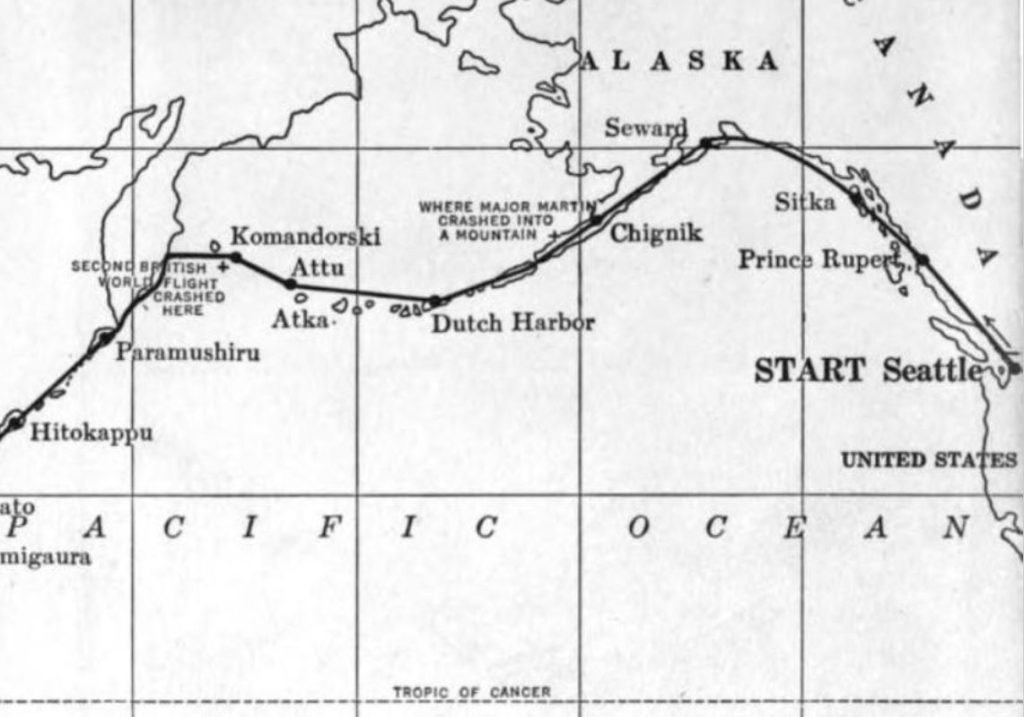
They stayed at the place where the accident happened for two days, finding shelter while waiting for the weather to get better. Then, they walked out of the wild area for six more days, surviving on emergency food and eating a medium-sized game bird called Rock Ptarmigan. Both had snow blindness, but they used boric acid from their first aid kit to reduce the swelling around their eyes. Things seemed very bad for both men until they found a small house where a trapper used to live, near the beach close to Port Moller in the Aleutian Islands. They stayed there for two days to warm up and eat the food they found in the house. They left the house on May 10th, going towards Port Moller, which they estimated was about twenty-five miles away. Late that afternoon, they unexpectedly stumbled into a cannery with a boat that took them to a nearby village. From there, the news was sent by radio that the two men had been found. While they were missing, their story was the main topic in all the newspapers across America. On Mother’s Day, May 11, 1924, the country felt relieved when the morning papers announced they were alive and okay.
The First Flight Continues
Meanwhile, the other three airplanes kept flying to the west over Asia and Europe. The ” Boston ” plane had to land in the Atlantic Ocean close to the Faroe Islands. These islands belong to Denmark and are about 180 miles north of the Shetland Islands in Scotland. The planes from Chicago and New Orleans carried on with the trip. Later, Boston II caught up with them in Nova Scotia.
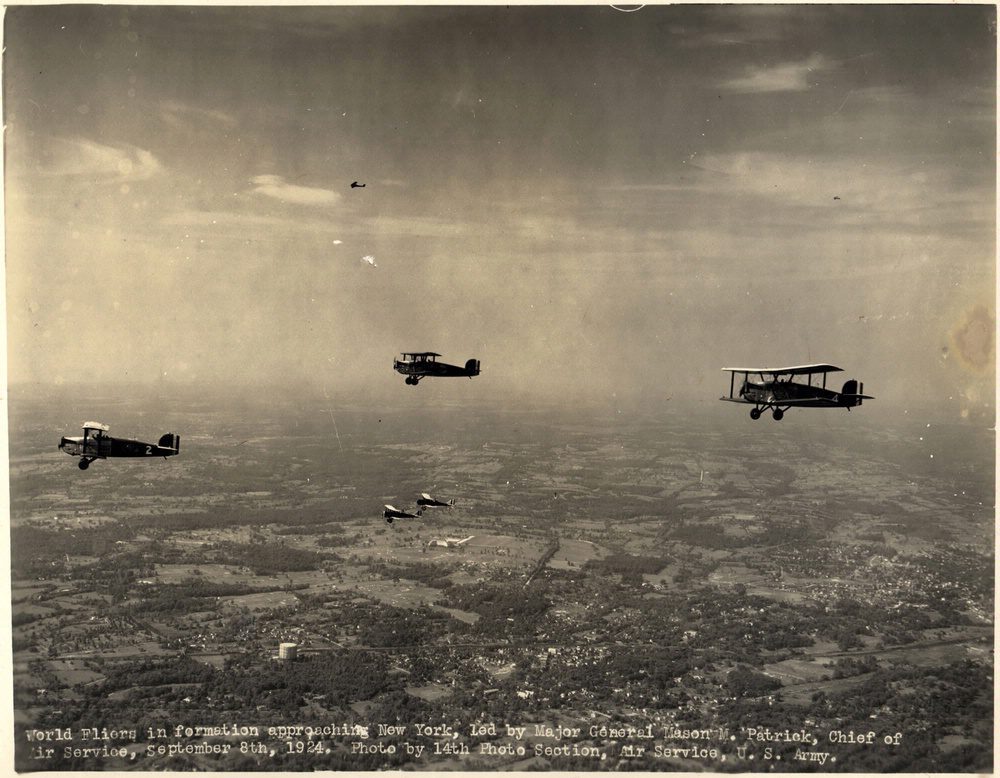
After a mission that lasted 175 days, the two original planes, along with Boston II, returned to Seattle on September 28, 1924. The total flight time was 371 hours and 11 minutes, covering over 27,553 miles. The flight was amazing, especially since five other countries had previously tried and failed to fly worldwide. The accomplishment was the most important event for the United States Army Air Service in the 1920s, and the flyers were all heroes. They were so esteemed that by a vote of the United States Congress, all participants, including S/Sgt Harvey, were given the Distinguished Service Medal, the first time the award was given for their actions unrelated to the war.
WWII Bomber Commands
On June 13, 1926, Harvey was promoted to Second Lieutenant. After that, he became a test pilot in the B-17 “Flying Fortress” program. When WWII started, he flew U.S. diplomats to Moscow. Later in the war, he worked on the B-29 program. Finally, he became a Colonel and led the 444th Air Expeditionary Wing in the Far East. They were the first to fly the B-29 Superfortress Strategic Bombers in the China Burma Theater and the Pacific Ocean Theater as part of the Twentieth Air Force.

Colonel Harvey received a Silver Star and three Distinguished Flying Crosses before he retired in 1957.
Retirement and passing
He lived in Alexandria, Virginia, where he loved playing golf and was a part of the Army Navy Country Club in Arlington, Virginia.
Colonel Alva Lee Harvey died on December 1, 1992, at 92, due to congestive heart failure. He is now at peace and buried in The Presbyterian Cemetery in Alexandria, Virginia.
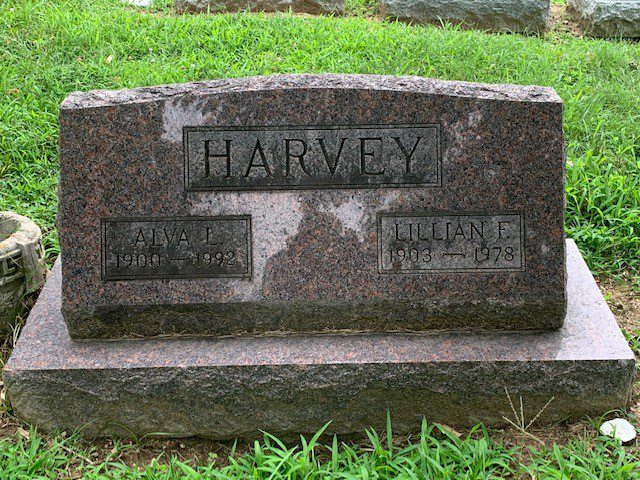
| HARVEY Alva L. Lillian E. 1900 – 1992. 1903 – 1978 |
The remains of the “Seattle” were found and are now being shown to the public in the Alaska Aviation Heritage Museum. The “Chicago” used to be displayed at the National Air and Space Museum in Washington, DC, but it is currently being stored or temporarily loaned out.
Seattle World Cruiser Project
Bob and Diane Dempster, private airplane enthusiasts, who flew their 1993 Piper Super Club around the world from 1994 until 1996, decided in 2001 to replicate the 1924 “Around the World Flight” using a replica of the Seattle that Martin and Harvey used during their portion of the original trip. They named their replica plane the Seattle II. It took much time and effort, but they made an exact copy of the original aircraft. They unveiled it for the first time at the original Boeing Field in Seattle, Washington, in June 2013.

The airplane got a special certificate from the FAA in December 2014. Since the first time it flew, the plane has often appeared in airplane magazines and airshows.
In October 2022, the owners of Gravestone Storie, David, and Christine Heiby, had the honor of visiting Bob, Diane, and the Seattle II aircraft in its hangar in Centralia, Washington.

Bob and Diane want to gather enough money to make the Seattle II go around the world in 2024.
Please go to the website of The Seattle World Cruiser [link], which has information about the project and how the plane was made. The engine used in the original Seattle, the 1919 Lincoln-built Liberty V-12, is incredibly fascinating.
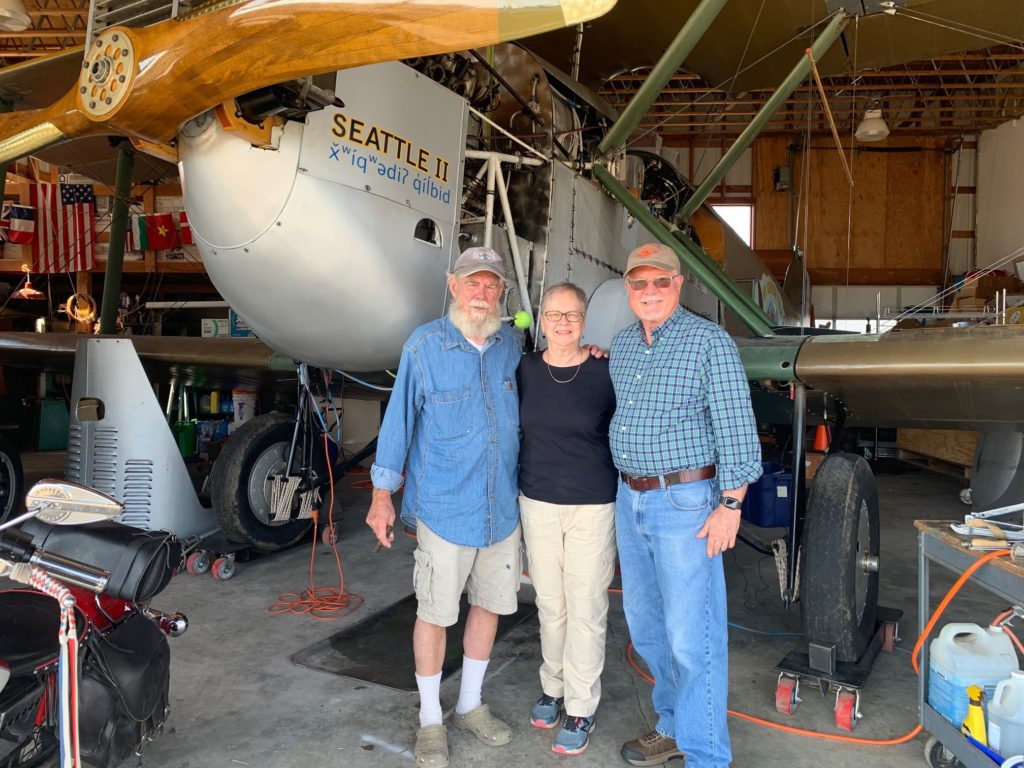
Sources of Information
Thomas, Lowell. The First World Flight. The Riverside Press. Boston and New York. 1924.
Tate, Dr. James P. The Army and Its Air Corps Army Policy toward Aviation 1919 – 1941. Air University Press. Maxwell Air Force Base, Alabama. 1988.
Arakaki, Leatrice R. Kuborn. John R. 7 December 1941, The Air Force Story. Pacific Air Forces Office of History. Hickam Air Force Base, Hawaii. 1991.
Official Records of the Presbyterian Cemetery and Columbarium. Alexandria, Virginia.
Wikipedia article on the First Aerial Circumnavigation of the earth. Accessed on July 2022.
Washington Post obituary notice for Colonel Alva Lee Harvey. Accessed on July 2022.
See the official website of the United States Coast Guard for additional information on the Revenue Cutter Algonquin (1898)